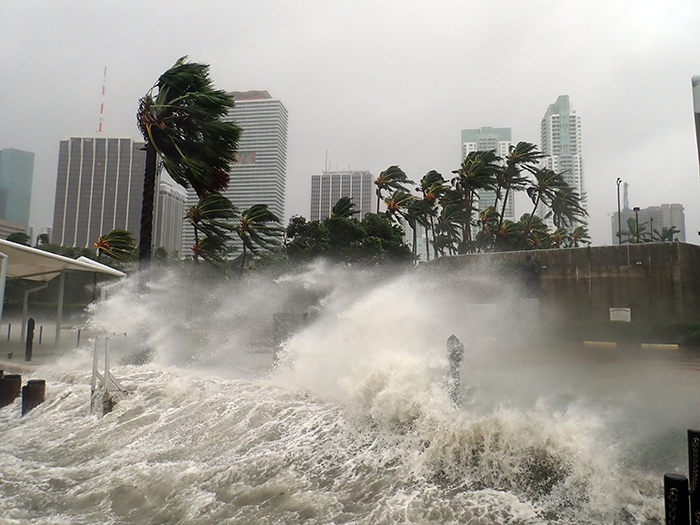Business Owners Worry Severe Weather Will Overwhelm Insurance

As extreme weather events become more frequent and costly, U.S. business owners are increasingly worried about the impact on their bottom line and some are adopting resilience strategies to mitigate their risks, according to a report from Gallagher.
A recent survey of business owners found that 91% of respondents are concerned about the effect of severe weather on their businesses. That Gallagher survey also revealed a growing worry among business owners that their insurance coverage may not be sufficient to pay for future losses – a critical issue as the nation faces ever-worsening weather extremes.
Severe convective storms (SCS) have emerged as a major driver of insured losses in the United States. During the first half of this year, SCS accounted for a 61% of the $61 billion in global natural peril losses, according to Gallagher. Over the past 18 months, insured losses from SCS surpassed $100 billion, marking the costliest period on record.
Historically, the insurance industry’s catastrophe losses were primarily driven by “peak perils” like hurricanes, with reinsurance absorbing a significant portion of the claims. However, secondary perils such as SCS are increasingly making up the bulk of the industry’s total claims, according to the survey. The rising frequency and severity of these events are exposing a growing number of businesses across a wider geographical area to weather-related losses, making it more challenging for insurers to model and predict losses accurately, Gallagher noted.
In response to the mounting property damage claims, insurance carriers are reassessing their appetite for catastrophe risk. Many are withdrawing capacity, particularly in catastrophe-prone states, while also increasing the cost of coverage and tightening policy terms, the survey stated.
“Traditional catastrophe losses were viewed as hurricane and earthquake, so the likes of Florida and California have been addressing this for years,” said Martha Bane, leader of Gallagher’s Property practice. “But now secondary-peril-driven catastrophes are impacting our clients in the Midwest, New Mexico, Colorado and Illinois.”
The changing market dynamics have left many business owners concerned about the adequacy of their insurance coverage, with 80% of business owners worrying that their property insurance may not cover a specific event or loss, according to the survey.
Additionally, there are concerns that the current market constraints will only intensify as insurance carriers and reinsurers adjust to the “new normal” and steadily pull away from volatile, catastrophe-exposed business, the report noted.
Building Resilience to Extreme Weather
As the frequency and severity of natural disasters continues to rise, business owners are increasingly looking for ways to reduce their long-term exposure to property damage and business interruption, the survey said. Many are finding that investing proactively in risk mitigation and prevention measures can pay off significantly down the road.
“Incorporating resiliency into the insurance decision-making process can help mitigate risks and costs down the road,” said Bane.
Some of the resilience strategies businesses are employing include:
- Relocating facilities to areas less prone to hazards like hurricanes, floods, and wildfires. While it can be costly upfront, moving to a lower-risk location can substantially reduce future losses and insurance premiums, the broker noted.
- Retrofitting existing properties to better withstand the impacts of storms and flooding. This may involve installing stronger roofs, wind-resistant windows, floodgates, and other protective features, such as wind-resistant windows. Even if a disaster still causes some damage, these upgrades can minimize the severity and get the business back up and running faster.
- “Building back better” when repairing or reconstructing properties after a loss. Instead of simply restoring a damaged building to its prior state, many owners are taking the opportunity to incorporate more resilient design and materials, Gallagher said. Elevating the structure, reinforcing the foundation, and selecting weather-resistant components are a few common tactics.
While upgrading facilities requires extra investment, research shows the payback can be substantial, the report noted. According to the The United Nations Office for Disaster Risk Reduction, every dollar spent on risk reduction and prevention saves up to $15 in post-disaster recovery costs, Gallagher reported.
The Resilience Dividend
Building resilience is not only critical for protecting businesses against future losses and disruption, it also can provide a competitive edge in today’s challenging insurance market, according to the report.
Carriers are taking notice of these loss control efforts and factoring them into underwriting and pricing decisions. In some cases where policyholders have taken risk mitigation steps, insurers that would normally avoid certain exposures are now willing to provide coverage, increasing market competition, the survey concluded.
“Incorporating resiliency into the insurance decision-making process can help mitigate risks and costs down the road,” noted Bane.
Access the full Gallagher report here. &










